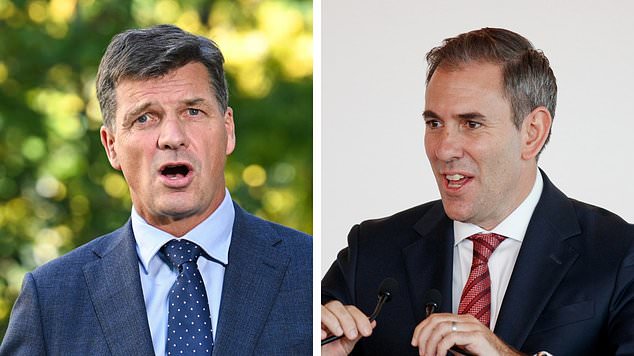Aussies suffer through biggest tax rise in the WORLD
Australians’ personal income tax burden, already among the highest in the world, grew faster than any other advanced economy last year as Commonwealth tax collections hit record numbers.
According to a report released Thursday evening by the Organization for Economic Co-operation and Development (OECD), a single, average wage earner without children paid about $24,791 in income taxes last year — a 7.6 percent increase over 2022 levels.
By comparison, Luxembourg, which recorded the second largest increase in the personal average tax rate, rose by just five percent.
With 24.9 percent of gross wages spent on income taxes, Australia is behind only Denmark (36 percent), Iceland (27.3 percent) and Belgium (26 percent), and well above the OECD average of just 15.4 per cent.
As high inflation has encouraged workers to seek wage increases to keep up with the rising cost of living, more of their wages have ended up in higher tax brackets, where income is taxed at a higher rate. Economists call this ‘bracke creep’.
Australians’ personal income tax burden, already among the highest in the world, grew faster than any other advanced economy last year as Commonwealth tax collections reached record highs (stock image)
Of the 21 OECD member states, only four countries, including Australia, do not automatically adjust their tax brackets to the inflation rate to neutralize the impact of wage growth.
The OECD report also cited the end of compensation for low and middle income taxes, which further increased income taxes.
The Scott Morrison-era compensation, also known as ‘the Lamington’, provided taxpayers with a lump sum of up to $1,080 after they filed their annual tax returns with the Australian Taxation Office.
The compensation was extended in the Coalition’s final budget before the 2022 election and eventually expired in mid-2022 when Labor chose not to extend it.
The recent rise in income taxes, which rose to a record $304.8 billion last year according to a separate analysis by the Australian Bureau of Statistics, has prompted the government to adjust personal tax rates with more lucrative tax cuts in to offer the third phase.
Commenting on the figures, a spokesperson for Treasurer Jim Chalmers said the upcoming tax cuts are a better way to combat the tax cut than the previous arrangements set out by the former Morrison government.
“Under Labor, every Australian taxpayer will get a tax cut from July and because of our tax cuts the average tax rate will fall from 25.4 percent to 23.9 percent,” they said.

Shadow Treasurer Angus Taylor is pictured on the left and Treasurer Jim Chalmers on the right
“Under our plan, the average taxpayer will pay less of their income in taxes over the next decade.”
The tax reform will take effect from July 1.
Angus Taylor, colleague of Dr. Chalmers, however, said the income tax hike has contributed to a “collapse” in Australians’ living standards.
“Hard-working Australians are being crushed by higher prices, higher mortgage repayments and higher taxes as a result of Labor’s economic mismanagement,” Taylor said.
‘To make matters worse, the Albanian Labor government has broken every promise on taxes since the last election – from the third phase of the Coalition tax cuts to the super taxes and even their multinational tax crackdown, which was so bad designed that it taxed Australian businesses and industries. .’
The federal budget is expected to increasingly rely on personal income tax, with its share of the Commonwealth’s total tax base expected to rise to almost 60 percent by 2063, up from the current level of 49 percent, according to the latest Intergenerational Report.
